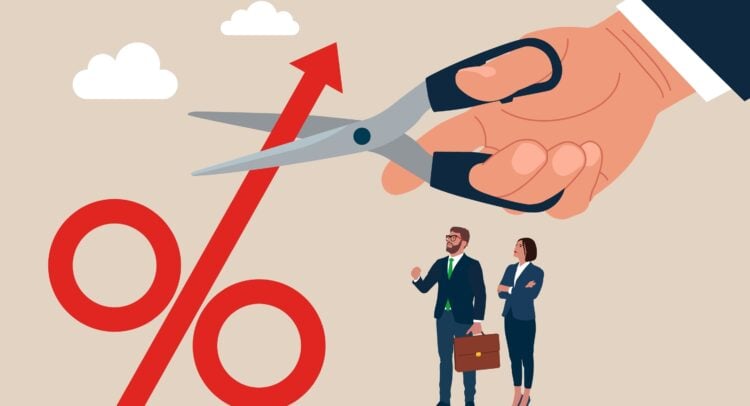Markets expect deep rate cuts next year, but the Fed’s projections and a changing lineup of policymakers point to a slower and more cautious path ahead.
The Fed May Cut, Just Not As Fast As Markets Hope
Story Highlights

U.S. markets are pricing a smooth glide lower for interest rates next year. The Federal Reserve’s own projections point to something slower and bumpier. This gap is key for stocks, bonds, and everything tied to the cost of money.
Elevate Your Investing Strategy:
- Take advantage of TipRanks Premium at 50% off! Unlock powerful investing tools, advanced data, and expert analyst insights to help you invest with confidence.
Markets Price Aggressive Cuts, While the Fed Signals Patience
Futures and options imply the policy rate slipping to roughly 2.75% to 3.0% by the end of 2026 — about 125 basis points below today’s 4.00% to 4.25% range. Wall Street houses from Citi (C) to Morgan Stanley (MS) are sketching multiple cuts over the next several meetings.
The Fed’s September Summary of Economic Projections tells a cooler story. Officials penciled in 3.4% for year-end 2026, only 20 basis points below their 2025 median. Friday’s delayed CPI at 3.0% keeps an October cut on the table, but core inflation still sits above target, and that keeps officials cautious. As former Fed economist Claudia Sahm reminds, “The medians in the SEP aren’t the Fed forecast and never will be.” Even so, they remain the clearest window into policymakers’ views.
New Faces Could Change the Fed’s Direction
Personnel will shape the path. Stephen Miran joined the Board in September, and the chair’s term expires in May 2026. Legal uncertainty around Governor Lisa Cook adds another wrinkle, with the Supreme Court set to hear Trump v. Cook in January.
As BNY Investments’ chief economist Vincent Reinhart put it, “If forced to reduce the agenda of the Trump administration to one guiding principle, we probably would choose ‘personnel is policy,’” he said. “We think that, once formed, the new majority at the center will favor lowering interest rates substantially and quickly.”
Regional Voters Reinforce a Go-Slow Bias
Four rotating presidents will vote next year alongside New York. The mix blends pragmatists and hawks. Cleveland’s Beth Hammack warned that inflation has stayed above target for 4.5 years. “When I look at the trend, it’s in the wrong direction,” she said. “We need to maintain a restrictive stance of policy to ensure that we can bring inflation back to target.”
Minneapolis’s Neel Kashkari cautioned that large cuts can backfire. “If you try to drive the economy faster than its potential to grow and its potential to produce prices, you end up just going up across the economy,” he said. Dallas’s Lorie Logan added that she will “be cautious about further rate cuts,” noting that delivering 2% requires “carefully calibrating the stance of policy.”
Inflation, Labor, and Tariffs Keep the Fed Guarded
Headline inflation eased versus expectations and the labor market is cooling, yet core price pressures remain sticky. Tariffs could keep goods inflation firm into 2026. Unemployment has drifted up and layoffs have risen, but officials still do not see an emergency that would force rapid-fire easing. This backdrop argues for cutting, pausing, and reassessing rather than a pre-set cadence.
What to Watch Going into 2026
Investors should track three things: First, the statement and press conference language around the inflation trend and the labor slack that would warrant more than a few moves. Second, the evolving lineup at the Board and how it votes as cases and confirmations resolve. Third, the tone from regional presidents as they gauge tariff pass-through and services inflation.
Joyce Huang at American Century sees just one cut in 2026, noting that earlier moves could “take some pressure off the Fed,” with more dependent on growth and the policy mix later in the year.
Bottom line, markets want a clean arc lower. The Fed is preparing for a slower descent. The disconnect is the risk to watch.
Stay ahead of macro events with our up-to-the-minute Economic Calendar — filter by impact, country, and more.
1















